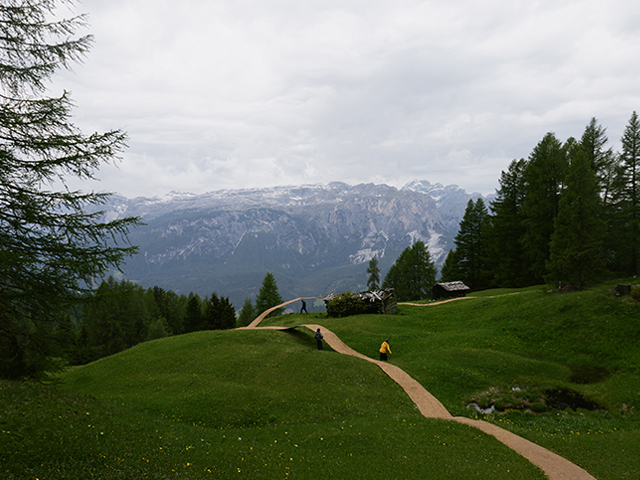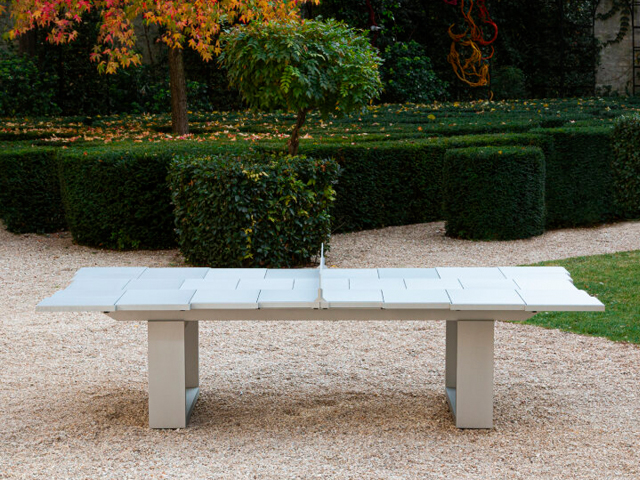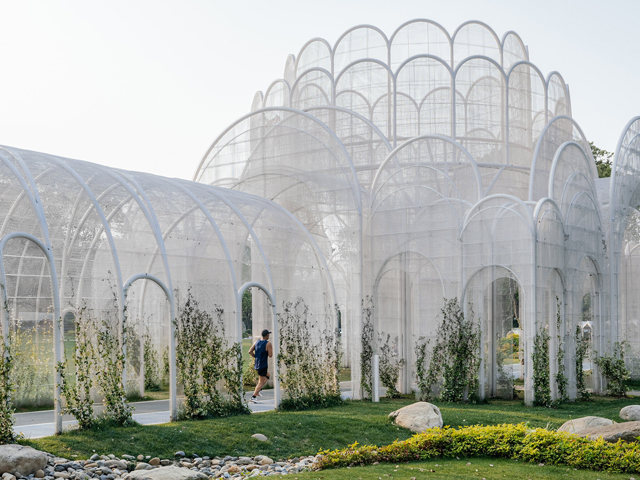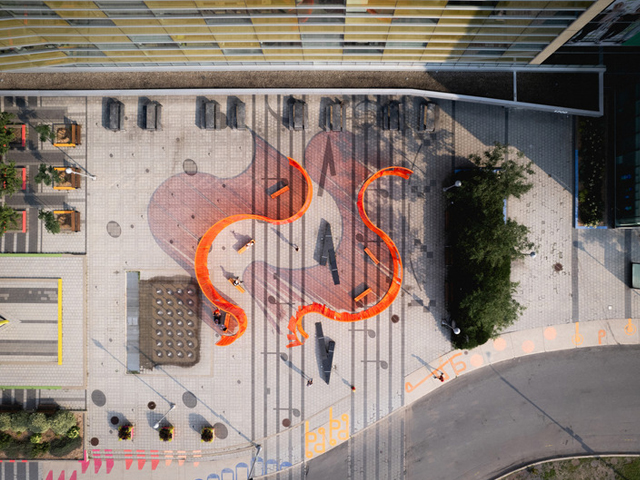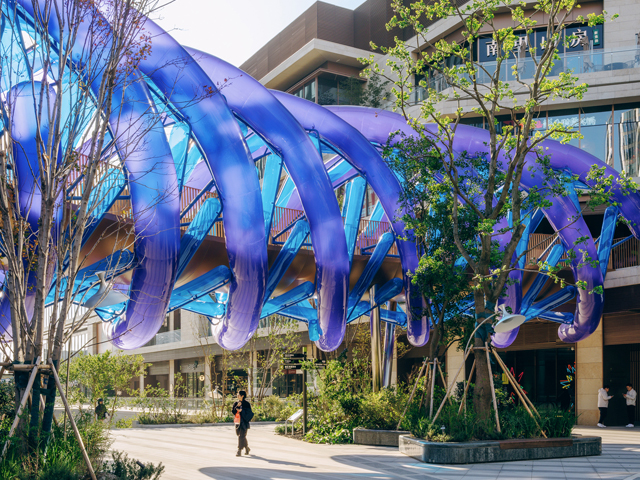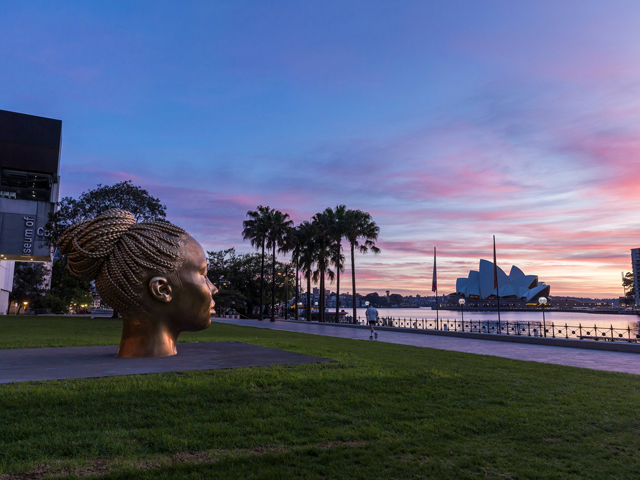STOP AND LOUNGE LIKE CIVILIANS OF OLD
25 Jun 2025
Artist Simone Brewster has created The Temple of Relics, inspired by ancient architecture. The colourful installation, contrasting heavily to its urban London surrounds, encourages visitors to stop and lounge like civilians of old.
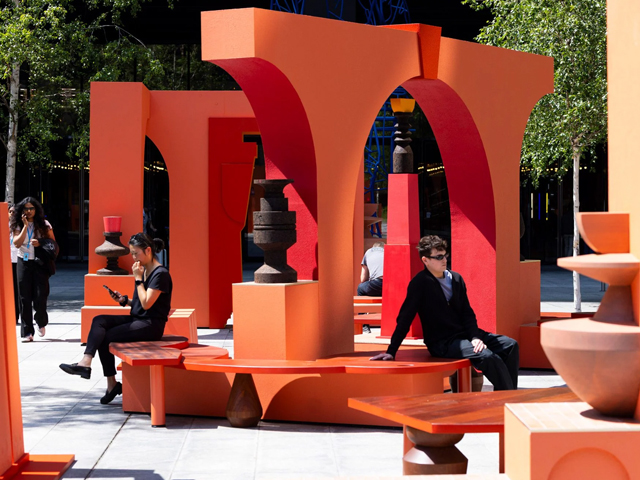
A series of large sculptural fragments make up this architectural folly, which has been created by artist Simone Brewster for the London Festival of Architecture. Designed to be an inner-city sanctuary for visitors, the Temple of Relics pavilion serves as a public seating and events space at its site on a plaza outside the Principal Place office in London.
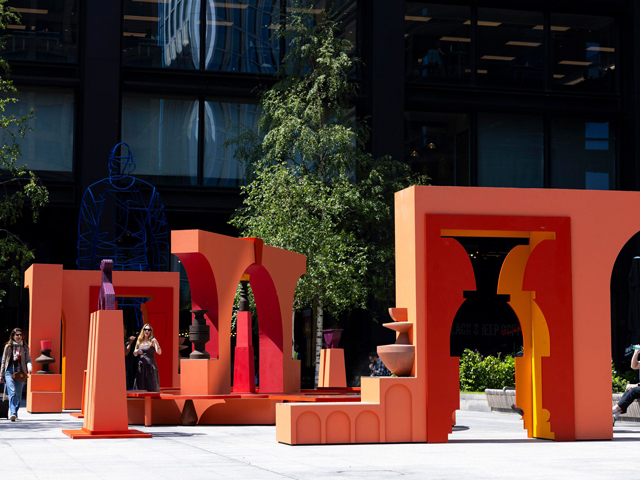
Curated by Brookfield Properties' Saff Williams, the installation is the latest in the Summer Pavilion series commissioned by the developer for the annual festival and will remain on the site until September.
Brewster, who has a background in architecture, drew on ancient architectural language for the commission. "I tapped into architectural languages that feel familiar, using the arch as a means to evoke monumental architecture, symbols of strength and stability," the London-based artist explained. "The intimate architecture of the pavilion invites passersby to interact with these sculptural fragments, allowing for reflection and grounding within the inner-city plaza."
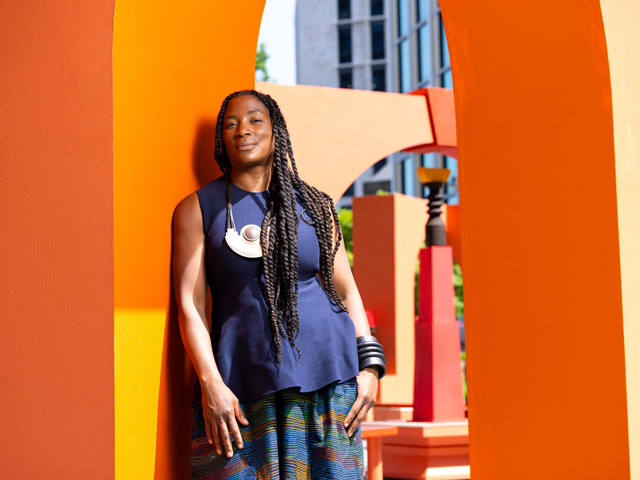
Reaching three-metres-tall, the structures take the form of arches and obelisks, and were each finished in warm red and orange-toned stucco. At either end of the installation, relic-shaped openings establish walkways into the pavilion, drawing visitors through the space.
For seating, the artist created red-toned wooden benches that wind around a central arched structure. These are raised on sculptural wooden forms conceptualised by Brewster as "abstracted fragments of the female silhouette" that reinterpret traditional caryatids found in ancient architecture.
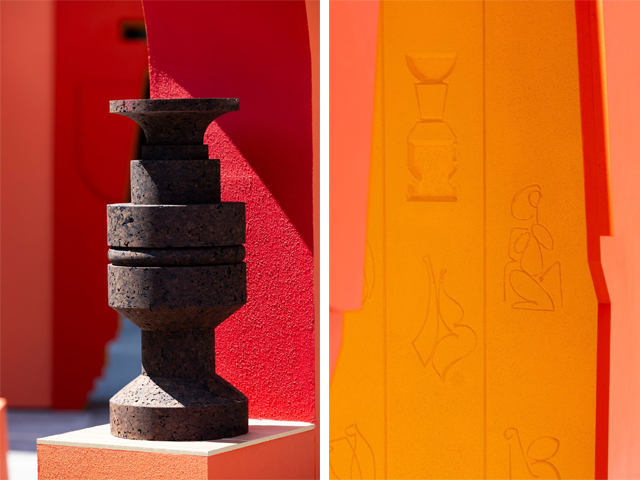
Aiming to bring a sense of tactility and permanence to the installation, Brewster used a range of materials to construct the space. This included cork, which was used to create small decorative relics – or urn-like vessels – around the space, alongside white tiles that contrast with the colourful structures.
"Focal points are created through the use of colour, texture and form," Brewster said. "The mix of materials grounds the piece, making it tactile and giving it a sense of permanence rather than ephemerality," she continued. "These qualities make the pavilion feel less transient." Additional decorative details include patterned surfaces, hidden carvings and sculptural silhouettes that reference the female form.
TEMPLE OF RELICS PAVILION
LOCATION London, England
ARCHITECT Simone Brewster
PHOTOGRAPHY David Parry, courtesy of PA Media


